
Dinosaurs Interesting Facts and Different Types
Do you love Dinosaurs? Have you ever wished that they were still living with us on Earth so you can see them? But have you ever wondered why there are no dinosaurs? Where did they go? Actually, what are dinosaurs in the first place? Let’s explore the world of dinosaurs and learn all about them in this lesson.
What is a Dinosaur?
The word dinosaur comes from Greek words, and it means “terrible lizard.” Like lizards and snakes, dinosaurs were reptiles. They were the main animals on Earth millions of years ago. However, all dinosaurs went extinct, or died, about 65 million years ago, even before the first human beings appeared on Earth. Some dinosaurs were the largest creatures that ever walked on Earth.
How Do We Know about Dinosaurs?
If dinosaurs went extinct before human beings appeared, then how do we know that they ever existed? In order to understand everything about dinosaurs, it is a must to understand what fossils are.
Fossils are the remains of dead animals or plants from millions of years ago that have been preserved in rock. When a dinosaur died, the hard parts of its body, like the teeth and the bones, were often buried in the mud.
In the early 1800s, scientists discovered fossils of dinosaurs and began to study them. Those fossils provide us with information about dinosaurs; what they looked like, what they ate, how they lived and what the Earth was like when they were alive.
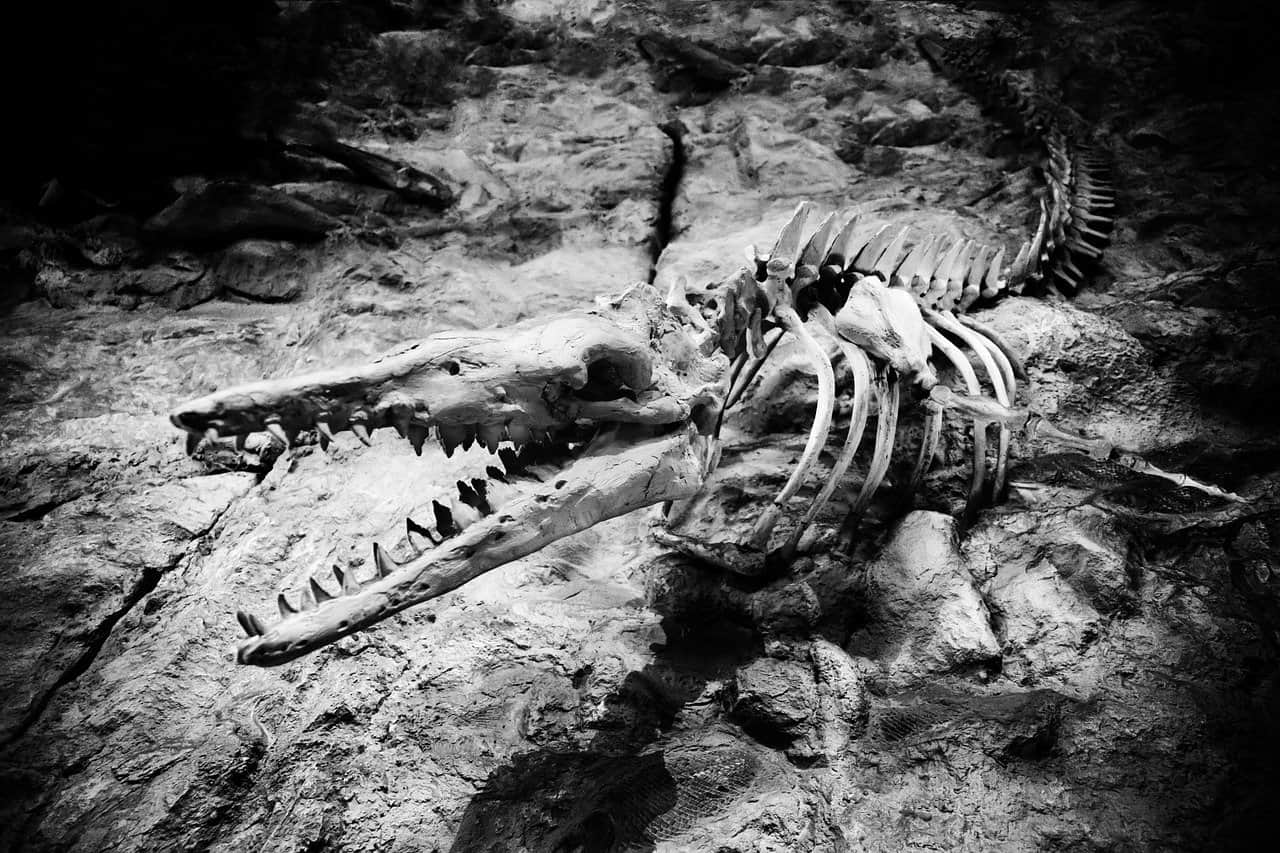
When and Where Dinosaurs Lived
Dinosaurs lived between about 245 and 65 million years ago, in a time known as the Mesozoic Era. This era extended for about 180 million years, and it comprised the Triassic, Jurassic, and Cretaceous geologic time periods. However, not all species, or types, of dinosaurs lived at the same time, nor did they all die out at the same time. They died out gradually until there were no dinosaurs at all.
Dinosaurs lived everywhere all over the Earth. Scientists have found their fossils on every continent. They also lived in all different kinds of environments, ranging from tropical forests to dry, sandy deserts. They also lived on the ground, in the skies and in the seas.
Physical Features of Dinosaurs
By studying the dinosaurs’ fossils, scientists discovered different features and body types of dinosaurs. Some dinosaurs were reptiles, similar to today’s crocodiles, snakes, and lizards. There were other dinosaurs that were more similar to today’s birds. Some dinosaurs were the largest creatures to ever walk on Earth, while some others were as small as birds.
Dinosaurs did not have any hair, but they had bumpy skin. Some dinosaurs had a protective, thick skin, others had spikes or horns. Some scientists believe that dinosaurs were grey or green in colour. These colours would have helped them adapt in their environments.
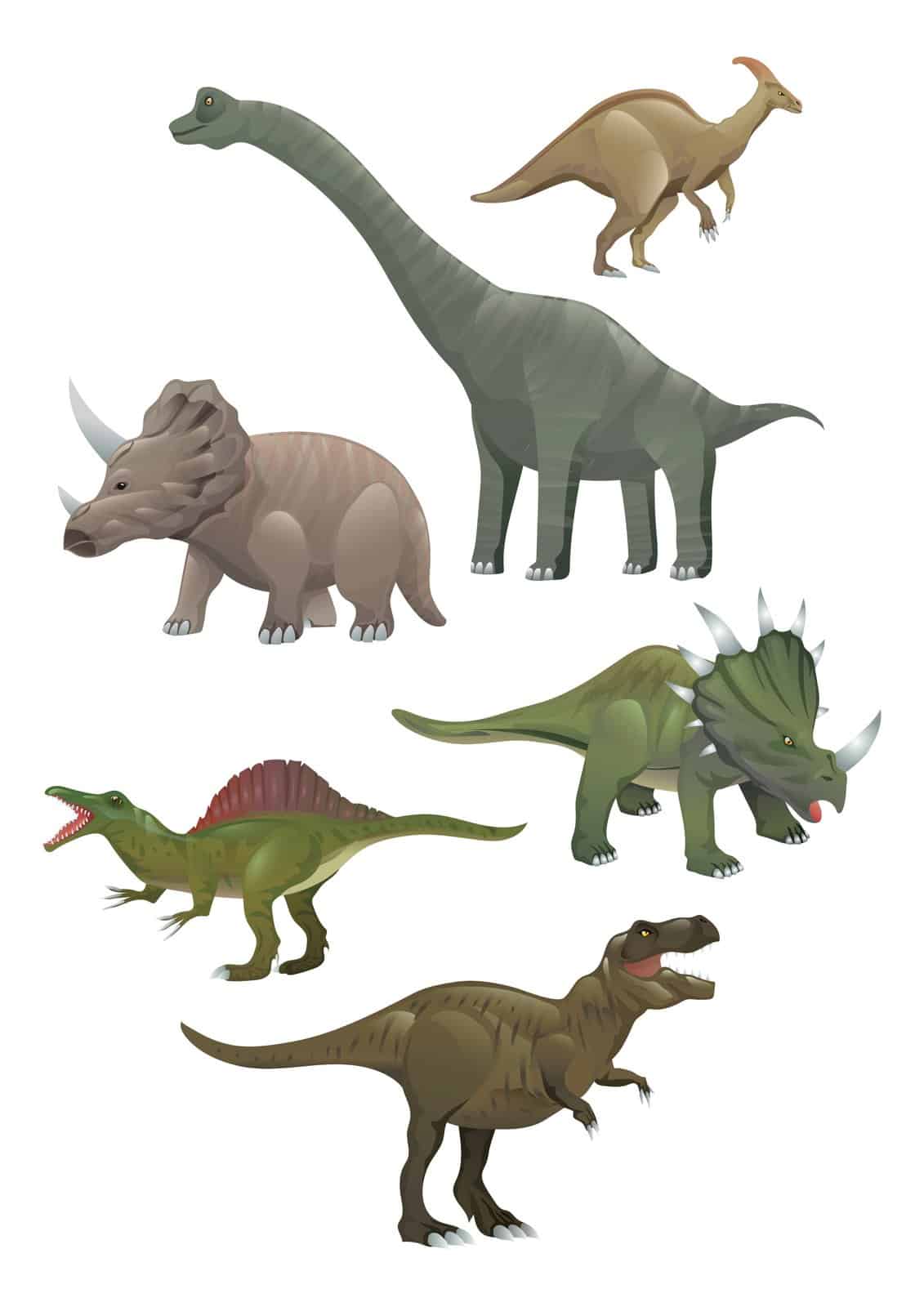
What Did Dinosaurs Eat?
Dinosaurs were classified into different categories according to what they ate. Some dinosaurs were herbivores, which means that they fed only on plants, while others were carnivores, meaning that they fed only on meat. Scientists can discover such information from the dinosaurs’ fossilised teeth.
Dinosaurs Locomotion
Dinosaurs were digitigrade, which means that they walked on their toes and did not touch the ground with their heels. Examples of digitigrade animals are dogs, cats and chickens. People and some other animals that walk on the soles of their feet are called plantigrade. Dinosaurs had a pad of tissue on the back of their feet that acted as a shock absorber. Their toes were pointed inwards.
Some dinosaurs were quadrupedal, meaning that they walked on all their four legs, and others were bipedal, meaning that they walked on only two. Some dinosaurs may have run on two legs but walked on all their four legs. Some dinosaurs moved slowly, and others were fast. There are a few dinosaurs that might have used their short arms to help them speed up while running. Scientists believe that dinosaurs used their tails for balance while moving and turning.
Life Cycle of Dinosaurs
Scientists believe that almost all dinosaurs laid eggs, just like reptiles today do. There were different shapes and sizes for dinosaurs’ eggs. For example, some eggs were round like a football, while others were shaped like a potato. Some dinosaurs built large nests for their babies, but others did not stay beside their eggs at all.
Dinosaurs’ growth rate was fast. Many young dinosaurs reached full size in seven or eight years only. The lifespan of dinosaurs varied depending on the type of the dinosaur. Large dinosaurs might have lived up to 100 years.
Types of Dinosaurs
Scientists have identified and named more than 700 species, or types, of dinosaurs, and they believe that there are still more to be discovered. They classified dinosaurs into two large groups based on the shape of their hip bones, and each group is divided into sub-groups. The two main groups are the Ornithischia and the Saurischia.
1. Ornithischia
The name Ornithischia comes from the Greek “ornith”, which means “of a bird”, and “ischion” (plural ischia), which means hip joint. They are named so because their hip bones were similar to those of birds. Members of this group are called ornithischians. All ornithischians were herbivores, or plant eaters.
Ornithischians had a central, extra bone at the tip of the lower jaw called the predentary. Most Ornithischian species had a toothless beak, covered by a horn, used to eat vegetation. Their cheek teeth were shaped like leaves, and they were well adapted for grinding plants. Ornithischians also had muscular cheek pouches. Their function was to store plants in the dinosaurs’ mouths and prevent them from falling out while they were chewing.
Ornithischians are divided into two subgroups: Cerapoda and Thyreophora.
1.1. Cerapoda
The cerapods are subdivided into three groups: Ornithopoda, Pachycephalosauria, and Ceratopsia. Some scientists join the Pachycephalosauria and Ceratopsia together in one group called Marginocephalia because they share a few features.
1.1.1. Ornithopoda
Ornithopoda means “bird feet”, and the word comes from the Greek ornithos, which means bird,and pous, which means feet. They are called so because they had feet with three toes similar to those of birds.
Most ornithopods were bipedal, which means that they walked and ran on their two back legs only. However, they would sometimes use all their four legs. Their pubic bone was pointing backward. They did not have any armor. They had a missing hole in the lower jaw, called a Mandibular fenestra.
Ornithopod Dinosaurs included the Corythosaurus, the Lesothosaurus, the Iguanodon, and the Parasaurolophus.
1.1.2. Pachycephalosauria
The name Pachycephalosaurus is from the Greek “pachys”, which means thick, “kephale”, which means head, and “sauros”, which means lizard. So, Pachycephalosaurus means “thick-headed lizard.” These dinosaurs are called so because their skulls are shaped like a dome.
The Pachycephalosaurus was relatively huge. It could grow up to 4.5 metres (15 feet) in length. It had small teeth, a short, thick neck, and a huge body. The bone shaped like a dome on top of its head was about 25 centimetres (2 feet) thick. This dome bone was surrounded by spikes that made Pachycephalosaurus look as if it was wearing a crown. There were also spikes running down its snout. Pachycephalosaurus was bipedal, which means that it walked and ran on its two back legs only. Its front legs were much shorter than the back legs.
Pachycephalosaurian Dinosaurs include: the Stegoceras and the Pachycephalosaurus.
1.1.3. Ceratopsia
The name Ceratopsia (or Ceratopia) comes from Greek and it means “horned faces.” The Ceratopsians were herbivorous dinosaurs, which means that they were plant-eaters. Those dinosaurs had an upper beak bone on the tip of the upper jaw called the rostral bone, and some of them had horns. They also had a bony frill at the back of the skull. Some ceratopsians were bipedal, which means that they walked and ran on the two back feet, and others were quadrupedal, which means that they used al their four feet for walking and running.
The Ceratopsian dinosaurs include: the Psittacosaurus, the Styracosaurus, and the Triceratops.
1.2. Thyreophora
Thyreophora means “shield bearers.” Those dinosaurs were armored by bony plates or spikes that protected them. Most thyreophorans were herbivorous, or plant-eaters. They had low, flat skulls. Their brains were small compared to their body size. Their snouts were shaped like spouts.
The Thyreophora is divided into many subgroups, including the Ankylosauria and the Stegosauria, as well as their relatives, including the Scutellosaurus and the Scelidosaurus.
1.2.1. Ankylosauria
Ankylosaurs were herbivorous dinosaurs, or plant eaters. They had armors of bony osteoderms, like those of turtles. Their bodies were bulky, with short but powerful limbs. They had small, triangular teeth, and long, flexible tongues. Ankylosaurs were quadrupeds, which means that they walked and ran on all four of their feet.
1.2.2. Stegosauria
Stegosaurians had armoured scutes and arrays of spikes running along their backs, hips and tails, which protected them from predators. They were small dinosaurs that walked and ran on all their four feet (they were quadrupedal). Their forelimbs were actually much shorter than their hind limbs. Their toes looked like hooves. They had small, long, flat, narrow heads and a horny beak that covered the front of the snout and the bones of the lower jaw.
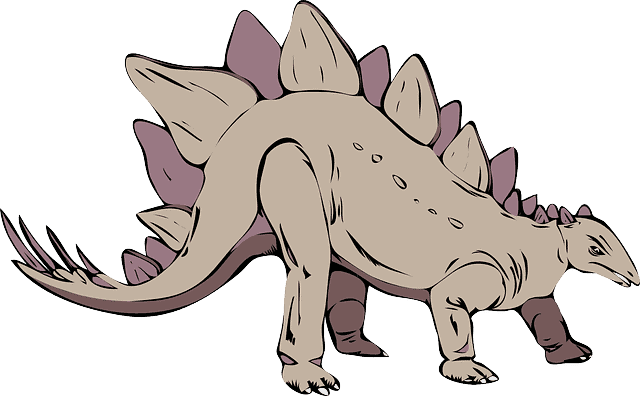
1.2.3. Scutellosaurus
Scutellosaurus are not included in either of the two main groups of the Thyreophora because they were so basic. They were small dinosaurs that reached lengths of 105 to 2 metres (about 5 to 6.5 feet). The length of their skulls reached about 9 centimetres (about 3.5 inches).
Scutellosaurus had small scutes along the back and sides of the body. They had small forelimbs, yet strong back limbs. So, they were bipedal, which means that they walked and ran on two feet. However, some scientists believe that they had strong forelimbs and they could move on all four feet. They also had cheek teeth shaped like leaves that were adapted for eating plants.
2. Saurischia
The name Saurischia comes from the Greek from the Greek “sauros,” which means lizard, and “ischion,” which means hip joint. So, Saurischia means “lizard hip” dinosaurs. Saurischians are called so because their hip bones looked like those of reptiles as the pubis pointed down and forward. The Saurischians included both carnivorous dinosaurs, or meat-eaters, and herbivorous dinosaurs, or plant-eaters. In fact, all carnivorous dinosaurs were saurischians.
The Saurischians are mainly divided into two groups, the Theropoda and the Sauropodomorpha.
2.1. Theropoda
The name Theropoda comes from Ancient Greek “thēríon,” which means wild beast, and “podós,” which means foot, so Theropoda means “beast foot.” Despite their name, those dinosaurs’ feet looked like those of birds. Members of this group are called “theropods.”
The Theropoda group includes all the carnivorous, or meat-eating, dinosaurs, but not all theropods were carnivorous. There were insectivorous, herbivorous, and carnivorous theropods. In fact, the Theropoda was the most diverse group of the Saurischia as it included small dinosaurs the size of birds, and big ones that reached six tons of weight. All theropods were bipedal, meaning that they walked and ran on their two back feet. Their forelimbs were short, and they probably used them to grasp and tear prey. Therapods’ limbs had three toes. Scientists believe that theropods could swim.
2.2. Sauropodomorpha
The Sauropodomorpha name comes from Greek, and it means “lizard-footed forms.”Sauropodomorpha is a type of saurischian dinosaurs that were herbivorous, or plant-eaters. They were also huge dinosaurs, with tiny skulls, long necks, and long tails. Sauropodomorpha is divided into two subgroups, which are the prosauropods and sauropods.
2.2.1. Sauropoda
Sauropods were so massive in size that they are considered the largest dinosaurs and the largest animals that have ever walked on the Earth. They were herbivorous, or plant-eating, dinosaurs. Their heads were tiny in comparison to their large bodies, and they had long necks and tails.
Sauropods were quadrupedal, meaning that they walked and ran on all four feet. Their back legs were thick and strong, ending with feet that had five toes, and only three or four of them had claws. Their forelimbs were thinner, ending with hands that supported their weight, and only the thumb had a claw. Their teeth were broad at the base and narrow at the neck.
The sauropods were divided into many subgroups, such as Cetiosauridae, Brachiosauridae, Camarasauridae, Diplodocidae, and Titanosauridae.
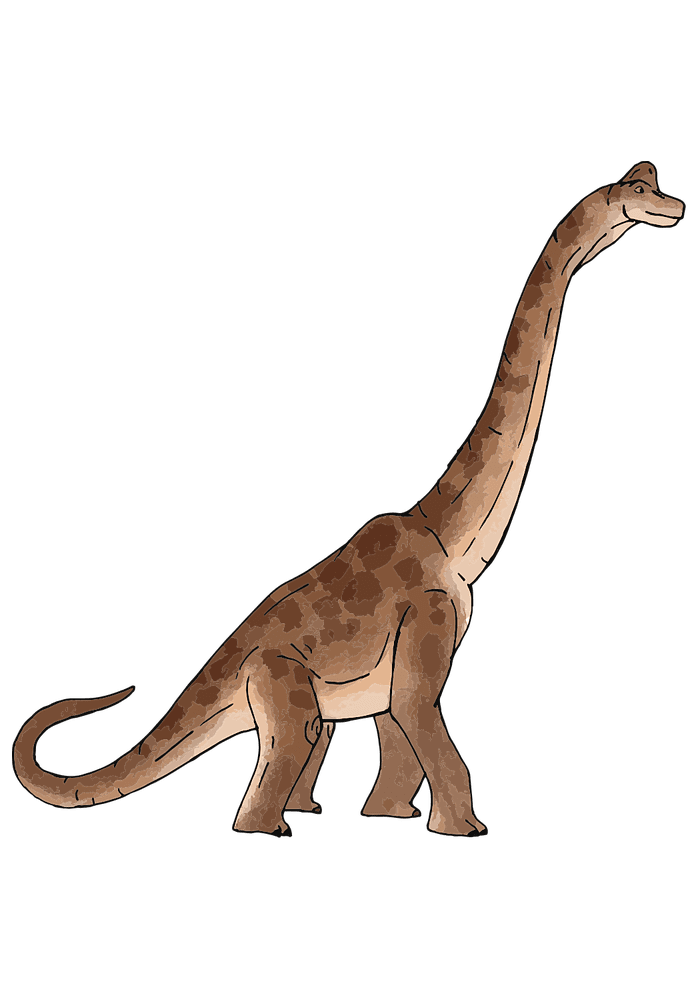
2.2.2. Prosauropoda
The name Prosauropoda means “before the lizard-footed.” The prosauropods existed before the sauropods, and they were smaller. Their lengths ranged from 2 metres (7 feet) to 8 metres (26 feet). Their weights could reach up to several tons in maximum.
Prosauropods were herbivorous, or plant-eating, dinosaurs. They had long necks and small heads. Their jaws were long and contained rows of thin teeth that looked like leaves. Most prosauropods were bipedal, meaning that they walked and ran on two feet, because their forelimbs were shorter than their hind limbs. However, some prosauropods could walk and ran on four feet.
Prosauropod dinosaurs include the Massospondylus and Plateosaurus.
Remarkable Dinosaurs
Here are some of the most remarkable dinosaurs:
Tyrannosaurus Rex
Tyrannosaurus Rex belongs to the theropod dinosaurs. It is one of the best-known dinosaurs, and it is actually considered the king of dinosaurs. The “rex” in its name means “king” in Latin. It was a carnivorous, or a meat-eating, dinosaur. In fact, it was one of the most dreadful predators to ever live, and scientists believe that it had the most powerful bite among all terrestrial animals.
The Tyrannosaurus Rex was bipedal, meaning that it walked and ran on two feet. It had large, powerful hind limbs, and short yet powerful forelimbs. It had a massive skull, balanced by a heavy, long tail. The T-Rex could reach up to 12 metres (40 feet) in length, up to 3.9 metres (12 feet) in height, and around 15 short tons in weight.

Spinosaurus
The Spinosaurus was the biggest carnivorous, or meat-eating, dinosaur ever. It belongs to the Spinosauridae group of the Theropod dinosaurs. The name Spinosaurus means “spine lizard,” and it refers to the huge spine that grew from its back for over 1.5 metres (5 feet) long.
The Spinosaurus was up to 18 metres long, and it weighed as much as 20 tons. Its fossils indicate that it must have been semiaquatic, which means that it lived partially in land and partially in water. It had a long, thin skull, and its shape resembled that of a crocodile.
Argentinosaurus
Argentinosaurus was one of the largest dinosaurs and the largest land animals that had ever walked on Earth. Its name comes from Argentina, where its fossils had been first discovered, and it means “Argentine lizard.” Argentinosaurus is a type of titanosaur sauropod dinosaur, and it was herbivore, or plant-eater. In fact, Argentinosaurus was the largest herbivorous, or plant-eating, dinosaur.
Argentinosaurus was very huge, but its remains are still incomplete, so scientists cannot decide yet whether it is the biggest dinosaur. It is estimated to be about 35 metres (115 feet) long, about 7 metres (24 feet) high, and about 65-75 tons in weight. In fact, Argentinosaurus is considered the longest dinosaur ever. Argentinosaurus was a quadrupedal dinosaur, meaning that it walked and ran on all its four legs, and it had a long neck and a long tail.
Giganotosaurus
Giganotosaurus belongs to a subgroup in the Theropoda called Allosauroidea. It was one of the largest carnivorous, or meat-eating, dinosaurs ever discovered. It is even larger than the Tyrannosaurus Rex, but a little bit smaller than the Spinosaurus. The name Giganotosaurus comes from Greek and it means “Giant Southern Lizard.”
The exact size of the Giganotosaurus has been hard to determine because its remains are still incomplete. It is estimated to reach about 12-13 metres (40 feet) long, and to weigh up to 13 tons.
Dreadnoughtus
Dreadnoughtus was one of the largest dinosaurs ever discovered. It was named after dreadnought battleships because of its huge size. In fact, it took scientists around four years to excavate its remains. Dreadnoughtus belongs to the titanosaurs group of the sauropods, and it was an herbivore, or a plant-eater.
Although it is not the largest dinosaur ever, dreadnoughtus is known to be the dinosaur with the largest mass. It was up to 26 metres (85 feet) in length, and around 60 tons in weight. In fact, it was heavier than four Tyrannosaurus Rex dinosaurs combined. Its skeleton is one of the most complete dinosaur skeletons to ever be discovered.
Mamenchisaurus
Mamenchisaurus is a species of the sauropod dinosaurs that is known to be the dinosaur with the longest neck ever. It was an herbivorous, quadrupedal dinosaur, with a long tail and a very long neck that was nearly half the total length of its body. Its neck is estimated to be 12 metres (39 feet) long, and it had 19 vertebrae. Mamenchisaurus was about 21-25 metres (70-80 feet) long, and it weighed around12 tons.
Diplodocus
Diplodocus belongs to a subgroup of sauropod dinosaurs called diplodocids, whose members were among the largest land animals ever existed. Diplodocus is known to be the dinosaur that had the longest tail ever. Its tail length reached up to 13-14 metres (43-45 feet). The dinosaur’s total length is estimated to be 24-26 metres (79-85 feet), and it weighed around 11 tons. It was an herbivorous and a quadrupedal dinosaur. Its forelimbs were a bit shorter than its hind limbs. It also had a long neck, a small, light skull, and a small brain.
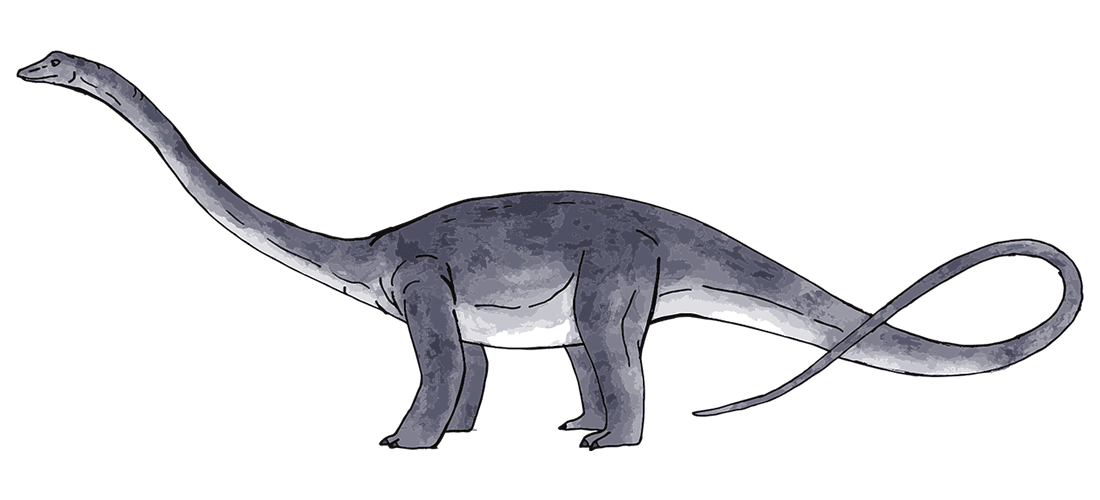
Struthiomimus
Struthiomimus is thought to be the fastest dinosaur. It is a species of the Ornithomimidaesubgroup of theropod dinosaurs. Its name means “ostrich mimic” in Greek, and it is named so because it looked a bit similar to ostriches.
Struthiomimus was a bipedal dinosaur. It had long, strong hind limbs that were adapted to running fast like an ostrich. Its estimated speeds of running range between 50 and 80 km/h. Struthiomimus was around 3 metres long and 1.4 metres tall, and it weighed around 150 kg. It had a small skull and a toothless, horny beak, so it might have been an omnivore, meaning that it was able to eat both plants and meat.
Megalosaurus
In 1824, Scientists described and named the first dinosaur in history, which was the Megalosaurus. When scientists first found its fossils, they thought that it was an ancient lizard, so they named it Megalosaurus, which means “great lizard.” Dinosaurs were not known yet at that time.
Megalosaurus was a large carnivorous, or meat-eating, dinosaur that belonged to the theropods. It was bipedal, meaning that it stood, walked and ran on its two back legs that were ling and muscular. Its front legs were short, yet they were strong. It had a long, thick tail, a large head, and a strong, thick neck. Its teeth were sharp and curved, and it was able to replace lost or broken teeth like modern sharks. Megalosaurus could reach up to 9 metres (30 feet) long and up to 3 metres (10 feet) tall, and it weighed about 1 ton.
Extinction
The number of living dinosaurs had decreased gradually for millions of years before they all disappeared. All dinosaurs went extinct, or died out, about 66 million years ago in the late Cretaceousperiod. Scientists still do not know exactly the reason behind the extinction of dinosaurs.
Some scientists believe that they died out because of changes in the Earth’s temperatures. Upon studying fossils of plants, they found out that there had been a change in environmental conditions that led to a decrease in the global climate. This would have led to starvation that might have caused the dinosaurs’ extinction.
Other scientists suggest that a huge asteroid had collided with Earth and caused so much dust that blocked heat and light from the Sun for a long time. This would have prevented plants from growing, and herbivorous dinosaurs would have then died from starvation. This would have also caused the carnivorous dinosaurs to starve because they hunted the herbivorous dinosaurs for food, and, as a result, they too had died out.
Interesting Facts about Dinosaurs
- Birds are considered the only living dinosaurs. What might be surprising is that they evolved from the theropods rather than from the ornithischian, or bird-hipped, dinosaurs.
- The science that studies the history of life on Earth through fossils is called palaeontology. The scientist who studies palaeontology is called a palaeontologist.
- An English palaeontologist called Richard Owen came up with the word “dinosaur” after he had seen many dinosaur fossils and realised that they are related to each other.
- No dinosaurs were able to fly, except for birds, and no dinosaurs lived entirely in water, though some were able to swim and some others were semiaquatic.
- The first dinosaurs on Earth were carnivorous dinosaurs. The herbivorous and omnivorous dinosaurs appeared later.
- Some of the largest herbivorous, or plant-eating, dinosaurs had to eat as much as a ton of food a day.
- Most carnivorous dinosaurs were bipedal, meaning that they walked on two feet. This made them faster and left their hands free to grab their prey.
- Most herbivorous dinosaurs were quadrupedal, meaning that they walked on all four feet. This helped to better carry their heavy bodies.
- Huge dinosaurs that had short legs were among the slowest dinosaurs, such as Apatosaurus, Diplodocus, and Brachiosaurus.
- The longest dinosaur name is the Micropachycephalosaurus. It was an herbivorous ceratopsian dinosaur. Its name means “small thick-headed lizard.”
- Defense mechanisms varied among different dinosaurs. For example, some meat-eaters had sharp teeth, and some plant-eaters had long horns or sharp spikes.
- Herbivorous dinosaurs often lived in herds, or together, for protection.
- Scientists look at the gaps between dinosaurs’ footprints to be able to guess how fast a dinosaur walked or ran.
- The best fossils often belong to dinosaurs that lived near water because the sand and mud in the sea could bury their remains quickly after their death, so there is less decay.
- Dinosaurs sometimes swallowed large rocks. Those rocks helped them grind up food.
- There were other animals that lived when dinosaurs were alive, like birds and the ancestors of today’s frogs, turtles, lizards, and snakes. Scientists do not know why dinosaurs could not survive while some animals could.
- A Tyrannosaurus Rex’s bite was more than twice as powerful as a lion’s bite.


Leave a Reply